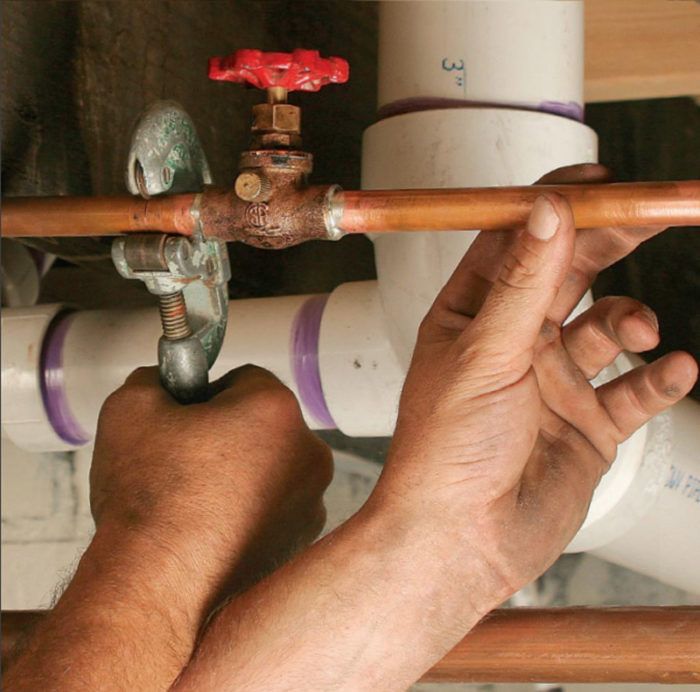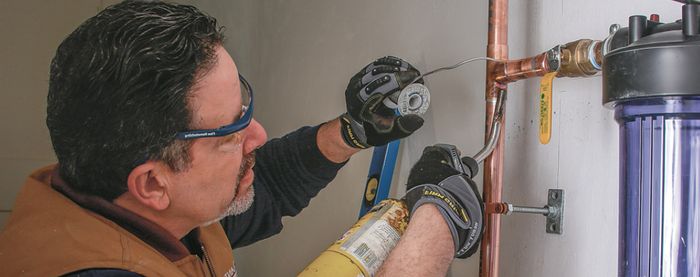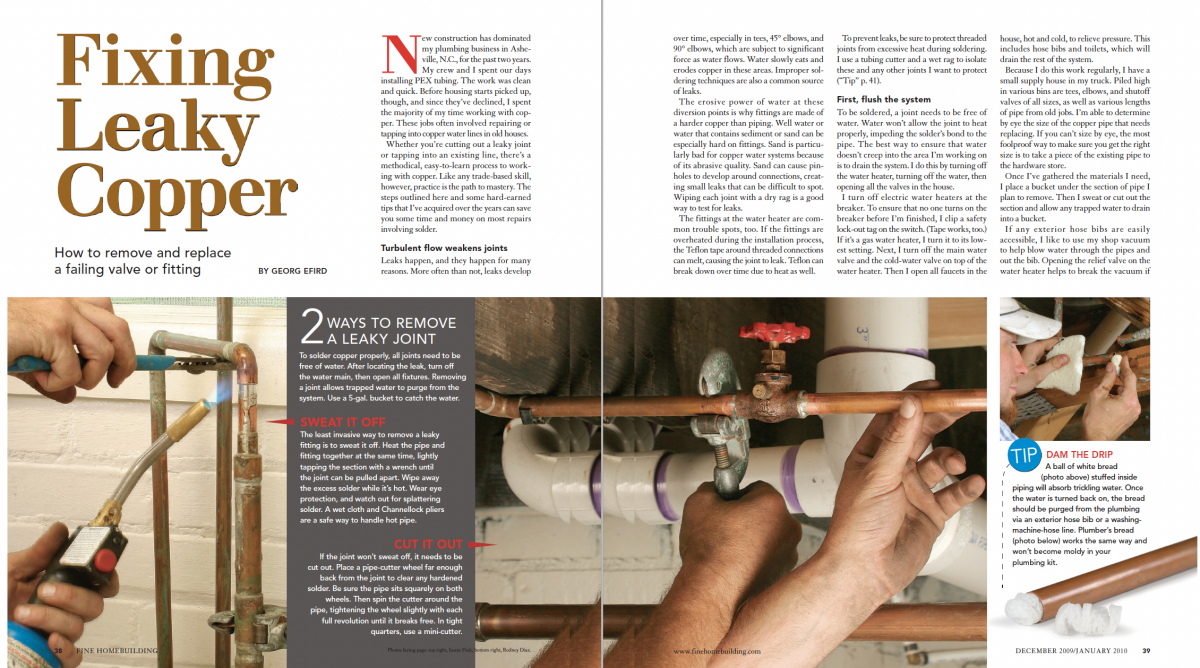Fixing Leaky Copper
Learn how to remove and replace a failing valve or fitting when working with copper pipe.

Synopsis: Even in the best plumbing systems, leaks happen, often over time and especially at transition areas. Certified green plumber Georg Efird outlines his process for fixing leaky copper pipes. Efird removes leaky joints in two ways: sweating off the joint, which is least invasive; and cutting out the joint, which is necessary if the joint can’t be sweated off. Before a repair can be made, you must remove all water from the plumbing system. Next, ream, clean, and apply flux to the fitting. Then heat the pipe and carefully apply solder. Be sure to wipe down the pipe to remove excess flux, which is corrosive. Efird includes several tips, including advice on diverting heat to protect areas surrounding pipe, using bread to manage drips, and crimping joints to help hold unsteady work together before assembly is complete.
New construction has dominated my plumbing business in Asheville, N.C., for the past two years. My crew and I spent our days installing PEX tubing. The work was clean and quick. Before housing starts picked up, though, and since they’ve declined, I spent the majority of my time working with copper. These jobs often involved repairing or tapping into copper water lines in old houses.
Whether you’re cutting out a leaky joint or tapping into an existing line, there’s a methodical, easy-to-learn process to working with copper. Like any trade-based skill, however, practice is the path to mastery. The steps outlined here and some hard-earned tips that I’ve acquired over the years can save you some time and money on most repairs involving solder.
Turbulent flow weakens joints
Leaks happen, and they happen for many reasons. More often than not, leaks develop over time, especially in tees, 45° elbows, and 90° elbows, which are subject to significant force as water flows. Water slowly eats and erodes copper in these areas. Improper soldering techniques are also a common source of leaks.
The erosive power of water at these diversion points is why fittings are made of a harder copper than piping. Well water or water that contains sediment or sand can be especially hard on fittings. Sand is particularly bad for copper water systems because of its abrasive quality. Sand can cause pinholes to develop around connections, creating small leaks that can be difficult to spot. Wiping each joint with a dry rag is a good way to test for leaks.
The fittings at the water heater are common trouble spots, too. If the fittings are overheated during the installation process, the Teflon tape around threaded connections can melt, causing the joint to leak. Teflon can break down over time due to heat as well.
To prevent leaks, be sure to protect threaded joints from excessive heat during soldering. I use a tubing cutter and a wet rag to isolate these and any other joints I want to protect.
First, flush the system
To be soldered, a joint needs to be free of water. Water won’t allow the joint to heat properly, impeding the solder’s bond to the pipe. The best way to ensure that water doesn’t creep into the area I’m working on is to drain the system. I do this by turning off the water heater, turning off the water, then opening all the valves in the house.
I turn off electric water heaters at the breaker. To ensure that no one turns on the breaker before I’m finished, I clip a safety lock-out tag on the switch. (Tape works, too.) If it’s a gas water heater, I turn it to its lowest setting. Next, I turn off the main water valve and the cold-water valve on top of the water heater. Then I open all faucets in the house, hot and cold, to relieve pressure. This includes hose bibs and toilets, which will drain the rest of the system.
To view the entire article, please click the View PDF button below:





